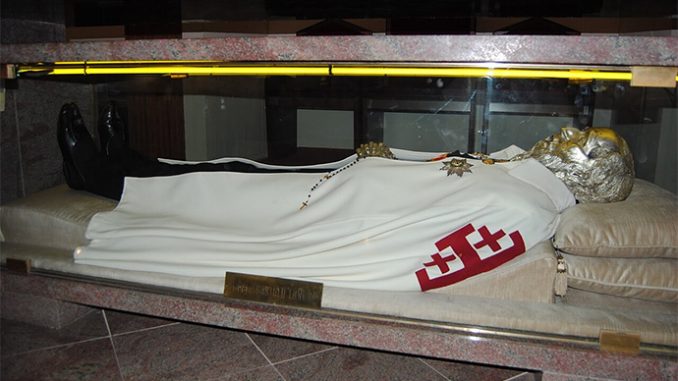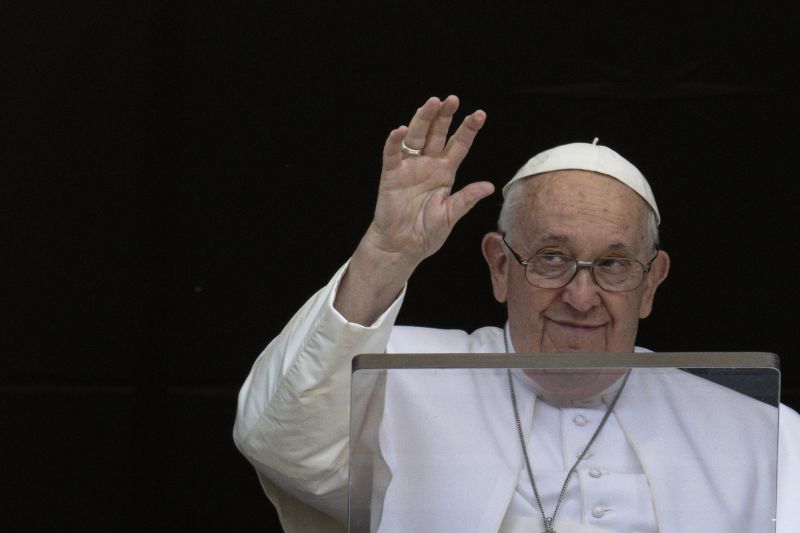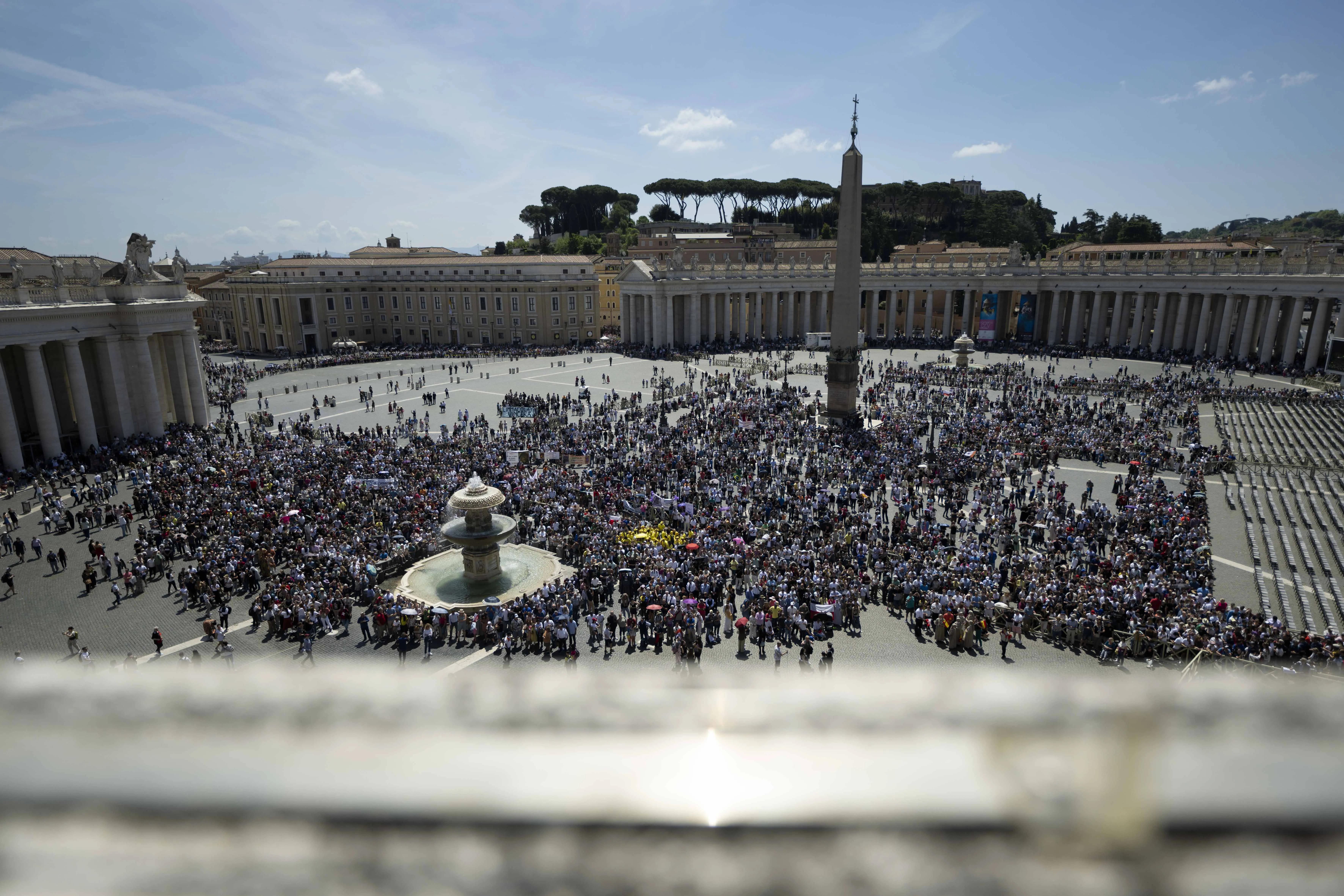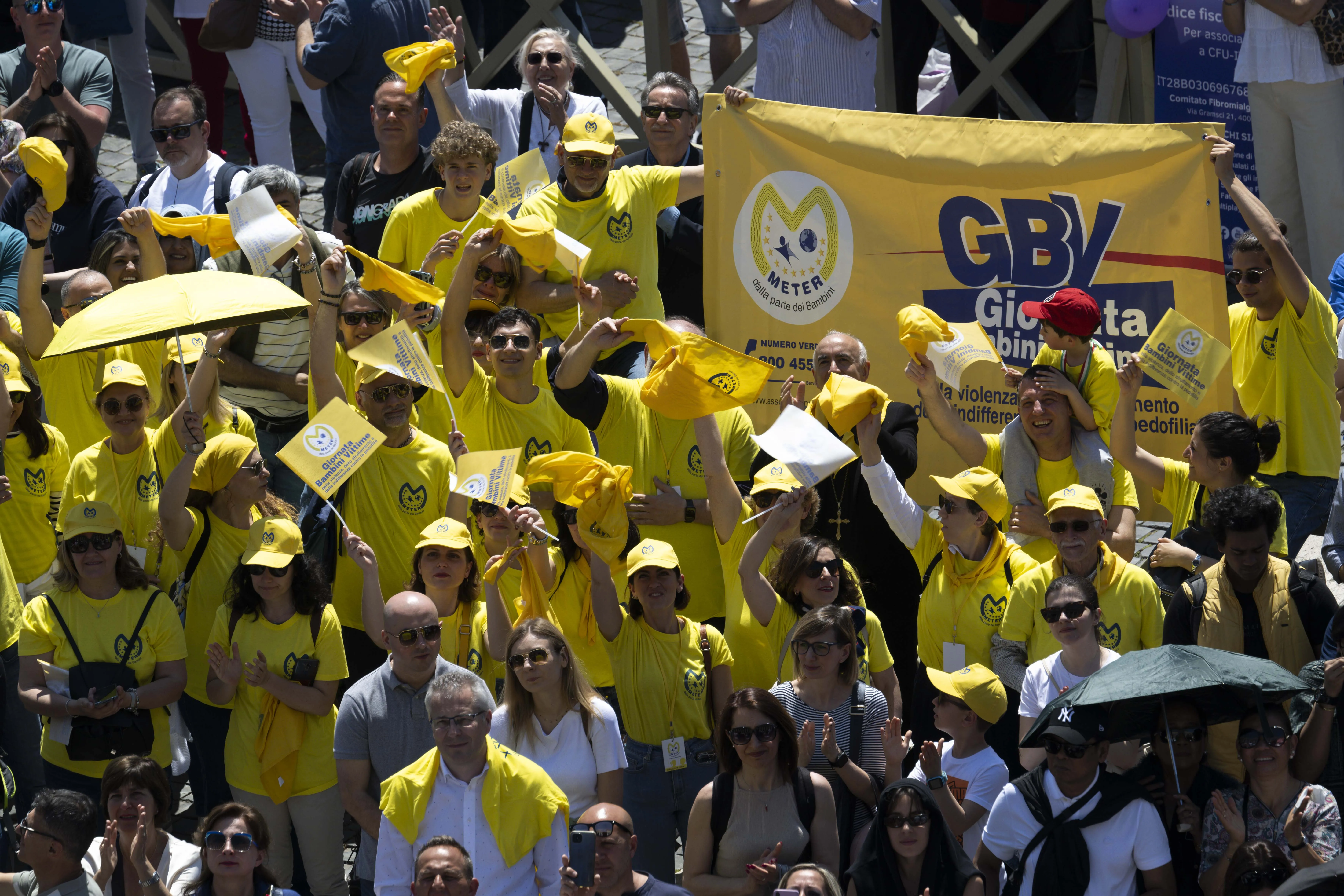
“Satanic priest becomes canonized saint” sounds like a headline from a trashy tabloid, but on October 19, 2025, it will be true. Since his beatification in 1980, the story of Bartolo Longo’s life has both shocked and inspired many people. However, Bartolo’s involvement with the occult is not the only aspect of his life that makes his Christian witness relevant to Catholics today.
Bartolo Longo (1841-1926) was born in Latiano, Italy, and his father was a doctor. Bartolo had three siblings, although one died young. He was sickly as a child, but under his father’s care, his health gradually improved. Bartolo was a bit of a prankster, sometimes fought with his sister, and earned good grades as a student.
But when he was ten years old, his father died. His mother remarried, this time to a lawyer. After sixteen-year-old Bartolo had graduated, the man sent Bartolo to a private tutor so that he could study to become a teacher.
Bartolo was not excited about the prospect of sitting in a classroom with squirming children for the rest of his life. Instead, the outgoing, impulsive young man decided that he wanted to become a lawyer. His stepfather agreed to send him to Lecce to study at a private school in 1859.
However, 1860 was a tumultuous year in Italy, a year of revolutions and the beginning of the unification of Italian territories into one Kingdom of Italy. Because of the widespread violence, Bartolo’s stepfather ordered him to return to Latiano. Three years later, the political situation in Italy had improved enough for Bartolo and his younger brother Alceste to travel to Naples and enter the university.
The upheaval in Italian politics had also brought about an upheaval in culture. The new government and other civil leaders promoted the glories of liberalism and ridiculed the “superstition” of faith in God. Some of Bartolo’s professors had only recently been released from prison for holding such views, and at least one of them was a former priest. They hated the Catholic Church and all priests, and they reveled in incorporating their philosophical and political beliefs into their lectures.
Bartolo bought into all their propaganda. He felt emancipated from the “childhood nonsense”1 of his faith in God. Like many of his friends, he was intoxicated with the promise of this new philosophy, which promised to usher in a new age of freedom from the repressive Catholic Church. Interestingly, while he happily joined his buddies in late-night discussions of newfound ideas and other pleasures, he refused to join them when they went to a brothel. Perhaps the respect for morality that he retained from his childhood ultimately helped to save his soul.
On the other hand, Bartolo was more than willing to join his friends at seances. Spiritualism was all the rage in Naples at the time, and he began to visit mediums regularly. He was particularly attracted to their promise of being able to conjure up the dead.
Bartolo had never gotten over the death of his father, and he desperately wanted to talk to him. While there were (and still are) mediums whose performances are more like a con game than anything else, Bartolo wandered into the dark side of spiritualism. He promised anything and everything he had to obtain the secret knowledge and hidden truths that were promised to him by a cult, even agreeing to be “consecrated” as a spiritualist priest. During this wicked ceremony, witnesses said that Bartolo responded to questions with the voices of long-dead famous men such as the Chinese philosopher Confucius and the Jewish High Priest Caiaphas.
And that is when his living hell began. He suffered stomach pains, bizarre hallucinations, and torturous nightmares. These events occurred constantly, and he was unable to eat or sleep. His friends thought he was possessed. When they told him they were worried about him, Bartolo could only speak glowingly about the beautiful “angel” who spoke to him. Over time, it began to dawn on Bartolo that the spirit’s answers to his questions were contradictory and that he was not receiving the secret insights he had been promised.
Fortunately, Bartolo had other friends. One of his professors noticed the dramatic change in his appearance and tried to warn him, and a Dominican priest also befriended him. Caterina Volpicelli, a devout noblewoman of Naples who is now a canonized saint, recognized that the spirit was a demon, prayed for Bartolo, and tried to convince him to leave the cult. Through the gentle but strong encouragement of these three friends—whom Bartolo later called his true angels—Bartolo was finally exorcised of the evil spirit who had been controlling him.
Somehow, Bartolo had managed to complete his law studies during this terrifying experience. At the age of twenty-five, he found himself free of evil spirits, back in the Church, and looking for a job as a lawyer. And he was on fire with a desire to lead souls to God.
For the next few years, he learned about the faith and established a regular prayer life. He also began his career and moved back to his hometown. He won some cases and lost some cases, gained some weight with the help of his mother’s cooking, and came close to getting married on two occasions. But two priest-friends of his believed that God was not calling him to the married state, and Bartolo came to the same conclusion. He resumed his studies and began to learn about philosophy, literature, and writing so that he could understand popular arguments against the faith and write effectively in response to those arguments.
Bartolo was no longer alone as a Catholic. He received spiritual direction from Dominican priests and decided to become a Dominican tertiary. However, he was also strongly influenced by the Franciscan priest and religious founder, Saint Luigi de Casoria. Bartolo often joined friends to pray the Rosary, but when he failed to appear one evening, his friends became concerned and sent a servant to check on him. They discovered that he was seriously ill and all alone, so he was brought to the home of one of the group’s members, Countess Mariana de Fusco.
The Countess de Fusco was a widow with five children who had a noble title and plenty of property, but no money. She offered Bartolo a place to live in exchange for tutoring her sons, and in many ways, it was a beneficial arrangement for them both. They were committed Catholics and shared a desire to promote the faith.
However, the countess was a difficult woman. She resented her fall from aristocratic society, complained about the debts her husband had left behind, treated others in an imperious manner, and was unable to discipline her children, particularly her troublemaking sons.
One day in 1872, the countess grumbled to Bartolo about her inability to get her tenants in Pompeii to pay their rent. Bartolo offered to travel to the city as a lawyer to try to settle these matters. As he talked to the residents of Pompeii, he was shocked to discover how poorly catechized—not to mention superstitious and outright heretical—these poor peasants really were. But, he realized, they believed in three Gods and evil charms because no one had taught them about their faith.
Bartolo begged the Blessed Mother to give him a way to help these people come to know God. That’s when he came up with the idea of a city festival, complete with fireworks, music, and games, but also with Mass and the Rosary. He returned the next year, having donated his own money and begged for donations from pious friends in Naples. He planned to serve as master of ceremonies at the great event. Unfortunately, when the date arrived, it poured down rain all day, ruining his carefully laid plans.
But Bartolo returned the next year, and the next, and the next, and gradually the poor, ordinary Catholics of Pompeii learned how to pray the Rosary. Small donations began to trickle in. As he begged for financial support, sometimes he was cruelly heckled, and he was not always able to restrain his temper. But he continued to remind himself that the Queen of heaven was watching out for him then, just as she had been when he was ensnared by an evil spirit.
While Bartolo was searching for some way to improve the decrepit church in Pompeii, he was given a painting of the Madonna. It was a dreadful painting, but it was all he had. He paid a restorer to improve it, which took much longer than expected. But after the image was installed in the parish church, everything changed. People began to flock to the church, so many people that a new, larger shrine had to be built, now known as the Pontifical Shrine of the Blessed Virgin of the Holy Rosary of Pompeii.
Bartolo never stopped begging and never stopped his efforts to bring more people to a greater love of God. Over the next fifty years, he brought about a resurgence of devotion to the Rosary, which spread throughout Italy and into other countries as well. He wrote books and magazine articles and was nominated for a Nobel Peace Prize for organizing a petition for world peace. In addition to the beautiful shrine in Pompeii, which was visited by cardinals, archbishops, and innumerable pilgrims, Bartolo organized the building of schools and orphanages.
But these grand achievements came at a great cost. When he built a school for children whose parents were in prison, he was publicly vilified as an ignorant man. After all, who could believe that such children could ever be anything but delinquents? His relationship with Countess de Fusco became a subject of bitter gossip, and to put the false rumors to rest, they eventually married. However, the marriage always remained chaste—and it appears that both of them very much wanted it to remain that way. Other false rumors arose that the countess’ wayward sons were benefiting from the donations to his charitable works. Those rumors even reached the pope, and in 1906, Bartolo was forced to renounce his leadership of everything he had built. Of course, the digestive disorders that began during his time of possession never went away.
Bartolo died at the age of eighty-five. He was a true missionary of the Rosary, a great promoter of Marian devotion, and will soon be named a saint of the Church. But he is also a heavenly patron for those whose hearts have been broken by loss and whose minds have been misled by falsehoods.
In the West today, many children grow up without the constant, loving presence of their earthly fathers. Many children and even adults are also unaware of the existence of our Heavenly Father, have been taught to mock religious belief as “childhood nonsense,” or have become involved in spiritually dangerous practices. For such people, Bartolo is a perfect heavenly patron.
Just as Bartolo’s heart was wounded by the loss of his father, the painful distance between himself and his stepfather, and the lies he was told about God and the Church by atheists, so many children and adults are wounded and blinded to the Way, the Truth, and the Life.
Fortunately, we can lead them back to the Father in heaven who loves them, just as Bartolo Longo did. After all, even children can count beads, say simple prayers, and trust in the Mother of God to love them with the same tenderness she showed for our Savior and her Son.
Endnote:
1 Gennaro Auletta, The Blessed Bartolo Longo (Pompeii: The Shrine of Pompeii, 1987), 23.
If you value the news and views Catholic World Report provides, please consider donating to support our efforts. Your contribution will help us continue to make CWR available to all readers worldwide for free, without a subscription. Thank you for your generosity!
Click here for more information on donating to CWR. Click here to sign up for our newsletter.







Great reminder to remind the demons of their future, when they try to bring up your past! St Michael the archangel, pray for us!
Was he a Satanist or just into spiritualism? Or a combination of both?
I know spiritualism isn’t a good thing but many well meaning people were drawn into it attempting to connect with deceased loved ones. Sir Arthur Conan Doyle is one example.
Hope his intriguing story of Paradise Gained inspires a new generation to break with the Modern world and opt for the Faith of our fathers.
Bartolo Longo was a knight of the Equestrian Order of the Holy Sepulchre of Jerusalem and is buried in the knightly cape of that ancient and papally approved Order.